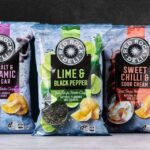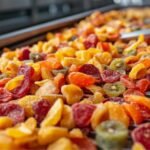If you thought 3-D printers were only meant for the manufacturing industry – printing out high precision machine parts, toys, jewellery, etc – well, it is time to think again. But there is a new frontier in 3-D food printing that’s only beginning to come into focus. A report.
Highlights:
- Research is ongoing to optimize 3-D print technology to create customized food materials and products with longer shelf life.
- 3-D food printing can also provide customised ingredients, a key factor in preventing diseases and conditions that require food adjustment.
- Recent developments include the use of alternative materials like plant-based proteins and edible inks to expand the range of foods that can be printed.
- Challenges include safety concerns and maintaining the 3-D shape of printed self-supporting structures.
3-D printers can just about replicate anything: from high-precision jets to automobile parts, toys, jewelry, home decorations, and clothes. Now innovators have found out that 3-D food printers can improve the nutritional value of meals, produce sculptures from everyday foodstuff, and provide food in regions that do not have access to fresh, affordable ingredients.
As far as 3-D food printing is concerned, it uses layers of raw material. In addition to offering customized food options, the ability to 3-D food printing at home or on an industrial scale could reduce food wastage and the cost involved with storage and transportation.
3-D Food Printing Technology and Material
The latest 3-D food printer is a combination of nozzles, powdery material, lasers and robotic arms to make sugar sculptures, patterned chocolate, and latticed pastry. The ChefJet from 3-D Systems, for example, crystalizes thin layers of fine-grain sugar into a variety of geometric configurations. The Choc Edge from Barcelona-based Natural Foods dispenses chocolate from syringes in beautifully melty patterns.

The Foodini, for example, uses fresh ingredients loaded into stainless steel capsules to make foods like pizza, stuffed pasta, quiche, and brownies. Pasta-maker Barilla’s machine prints noodles with water and semolina flour. And the prototype from Hod Lipson, a professor of mechanical engineering at Columbia, fabricates nutrition bars and simple pastries.
Advancements in Customized Food Microstructures
Jin-Kyu Rhee, Associate Professor at Ewha Womans University in South Korea, has been quoted saying, “We built a platform that uses 3-D printing to create food microstructures that allow food texture and body absorption to be customised on a personal level. We think that one day, people could have cartridges that contain powdered versions of various ingredients that would be put together using 3-D printing and cooked according to the user’s needs or preferences,” said Prof Rhee.

A groundbreaking study demonstrated the ability to replicate the physical properties and nanoscale textures of real food using a prototype 3-D printer. Researchers showcased how their platform could transform carbohydrates and proteins into foods with customizable microstructures, potentially enhancing texture and absorption.
“We are only in early stages, but we believe our research will move 3-D food printing to the next level,” said Rhee. “We are continuing to optimize our 3-D print technology to create customized food materials and products that exhibit longer storage times and enhanced functionality in terms of body absorption.”
Challenges and Considerations
Food 3-D printing also offers an opportunity to provide customised ingredients. A healthy diet, especially at an early age, is a key factor to prevent many diseases and many people suffer from diseases and conditions that requires food adjustment. Most of these customised food products are currently designed and made by specially trained artisans but 3-D food printing can provide an alternative.
Additionally, there are complications with printing because of the material that is being printed, that is, food. Dealing with food means that there are safety concerns for the 3-D printing process. Lastly, one of the main challenges for 3-D food printing is the challenge to print self-supporting structures and to maintain the 3-D shape.
Expanding the Range: Plant-Based and Edible Inks
In addition to these advancements, recent developments include the use of alternative materials such as plant-based proteins and edible inks to expand the range of foods that can be printed. Companies like Redefine Meat and NotCo are exploring 3-D printing for plant-based meats, aiming to mimic the texture and taste of animal products while catering to the growing demand for sustainable food options.
Looking Ahead
Despite its potential, 3-D food printing still faces challenges. Ensuring food safety throughout the printing process and developing self-supporting structures that maintain their shape are key concerns. Moreover, consumer preferences in taste, quality, and cultural factors will influence the adoption and success of this technology.
Overall, 3-D food printing represents a promising frontier in food production, offering opportunities for customized nutrition and innovative food design. While it remains complementary to traditional food manufacturing, its impact is growing as technology advances and new applications emerge.

Have a news or topic to share with industry? Write to us editorial@pfionline.com
















